Xijiang (西江) is the largest village of the Miao minority in China. If you plan to visit this place, you will find some useful info in this guide.

Not many know that when talking about “Chinese people”, the expression refers only to one of the 56 ethnic groups recognized by the government of China and, to be precise, the Han ethnic group. The other 55 ethnic minorities make up about 9% of the rest of the population.
Two Chinese provinces with the highest number of ethnic minorities are Yunnan and Guizhou. I wrote a lot about Yunnan in my blog, but Guizhou deserves a special mention. Although, at least in my opinion, not as spectacular as Yunnan, it is still one of the most beautiful and interesting provinces in terms of history and culture.
Without going into too much detail, it’s interesting to know this Chinese expression about this province: no three feet of land is flat, no three days are sunny, and no one has three taels of silver. Like most Chinese proverbs, it doesn’t translate very well, but the idea is that Guizhou Province is hilly, wet, and poor
The first impression for those who have never heard of this place might not be positive, but the truth is that due to its location, Guizhou is one of the provinces where there are more ethnic minorities. Visiting some remote villages, you’ll have the impression that time has stopped.
As for the climate, unfortunately, it is true that it rains often, but this adds a certain atmosphere to its beautiful landscapes. Although on my last trip, I focused particularly on the Miao minority, I hope to explore other characteristic places in Guizhou.
Scattered around the province, there are hundreds of villages that are more or less beautiful and more or less easily reachable, but the most famous of all is undoubtedly Xijiang: Thousand Household Miao Village.
A short introduction about the Miao minority
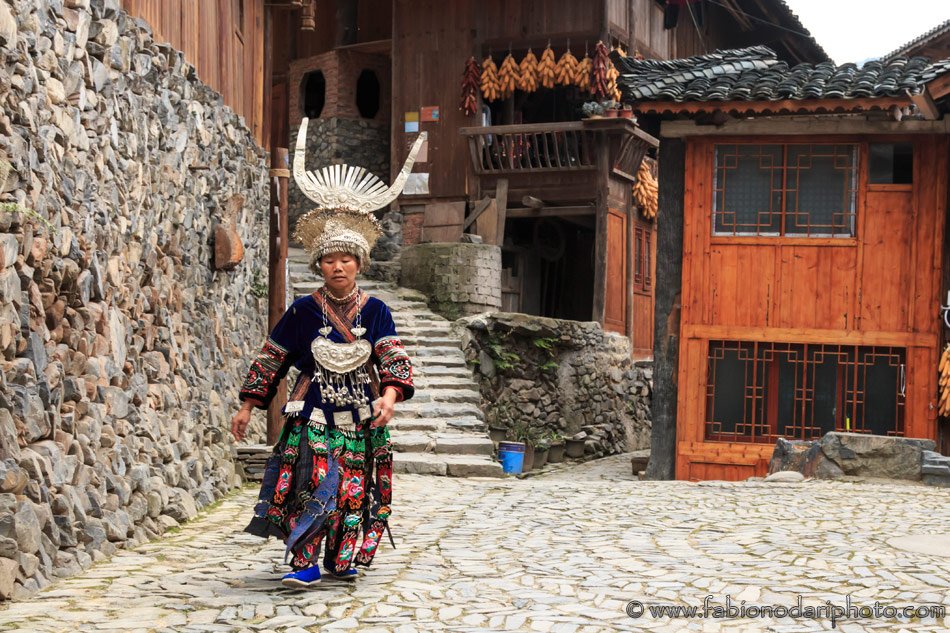
The Miao minority is the most represented in Guizhou. The criteria for a minority to be recognized by the Chinese government are quite strict, so many other Miao branches with completely different customs and traditions are not recognized as a different ethnic group. If you happen to visit these areas, you will see how the traditional attires and languages change radically from one village to another, even if officially, they all belong to the same group.
Some of the characteristics of the Miao are the passion for Mijiu (rice wine), the interesting hairstyles of the Miao women, and their love for silver decorations.
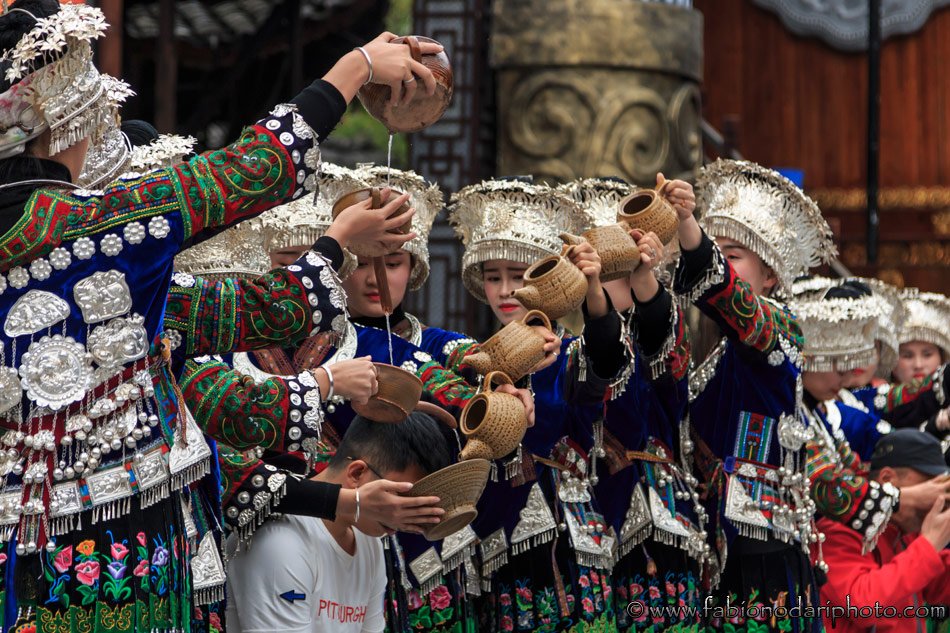
The Miao festivals are a great way to taste the Mijiu: the rice wine
If you want to research this topic more, visit the excellent Provincial Museum in Guiyang, Guizhou’s capital. You will realize that talking about Miao is an oversimplification.
Things to know before visiting Xijiang in Guizhou

The first thing to mention is that Xinjiang is the most famous Miao village. This means that it’s a very popular destination and therefore there are a lot of tourists. If you are looking for an authentic experience, Xijiang is probably not the ideal place.
Having said that, I think is worth spending at least a few nights before exploring other, more authentic areas. Staying in Xijiang will allow you to relax and enjoy the incredible view of the village houses without sacrificing comfort.
A positive aspect is that, unlike Lijiang, in Yunnan, there are still many families living there. So you will likely see scenes of everyday life.

As with all tourist sites in China, you must buy a ticket to enter the village. With the ticket, you will also have access to a performance in the main square, which is held daily. The performance is not worth it, in my opinion. If you are interested, you can attend a much more authentic show (and without political propaganda) in the village of Langde (朗德), about an hour’s drive away.
As for the accommodation, you’ll have a lot of options. You can book a guest house in advance using Booking.com or Trip.com (the best option in China), or search for something once you’ve arrived there. Remember that breakfast in Chinese hotels is not great. You’ll likely have to choose between soup noodles and fried rice.
Getting to Xijiang is relatively simple. There are numerous buses departing from Guiyang every day, and the trip takes about 4 hours. Another option is to take the bus from Kaili. The trip takes about 1.5 hours.
Langde (朗德): a more authentic experience
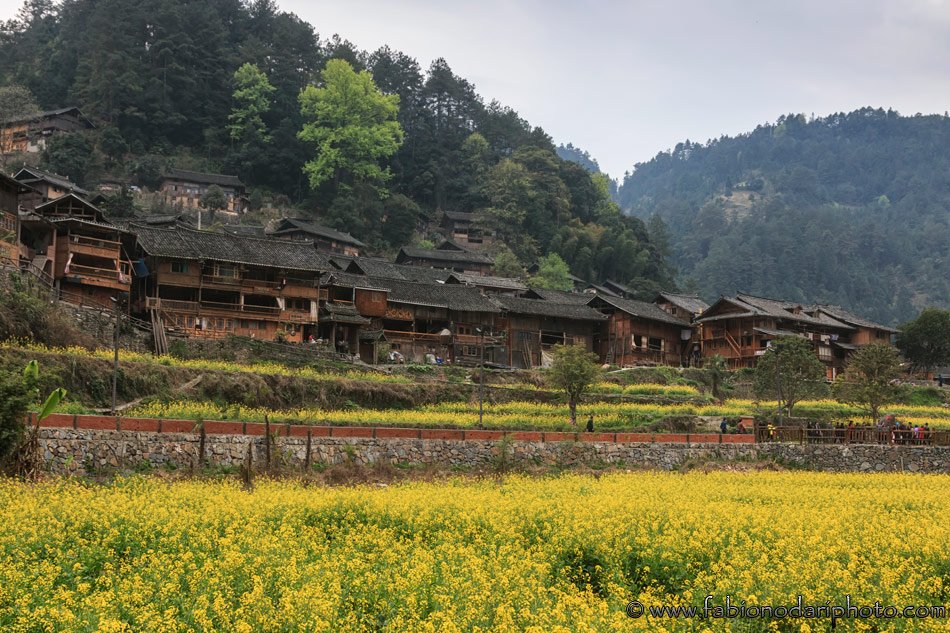
Langde(朗德) is another Miao village about an hour’s drive from Xijiang. The best way to get there is by private transport.
It’s more authentic than Xijiang, but you’ll see some tourists there. In the afternoon you can watch a show by people from the village. The show is very nice and more interesting than that of Xijiang.
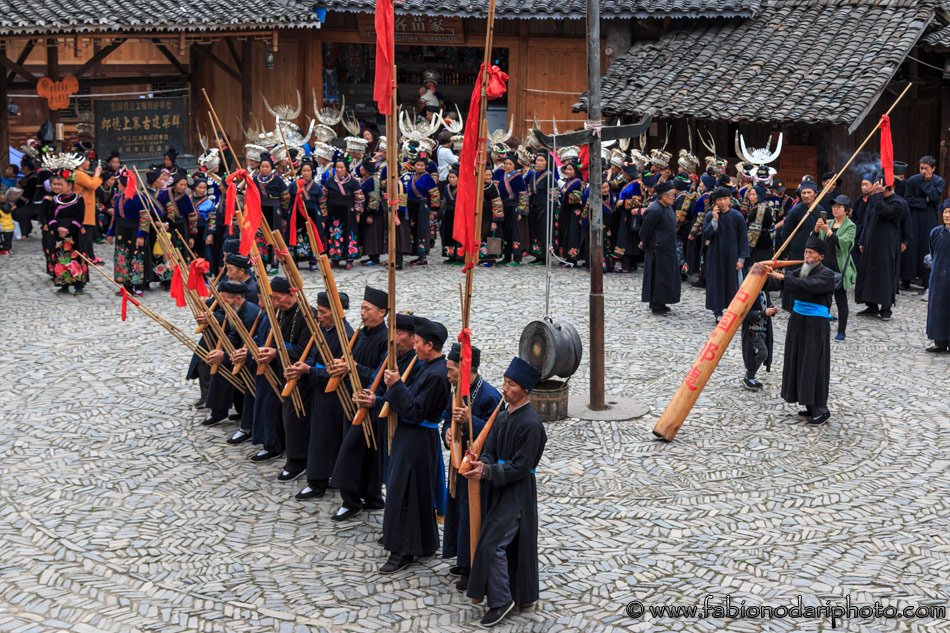
Walking through the small streets of the Langde village, you’ll have a clear idea of what is happening in China: an unprecedented exodus to big cities. In places like Langde, there are only elderly people and small kids. It’s as if an entire generation disappeared. The parents move away and leave their children with their grandparents until they grow up.
The people who live in these villages are generally very kind and smiling, especially if you can visit places without tourists and locals rarely see foreigners. It won’t be unusual for them to invite you home to share a meal with you.
It’s experiences like these that make a trip unforgettable and make us understand how most people are actually nice if you don’t have any prejudice and take some time to get to know them.
Final considerations about Xijiang
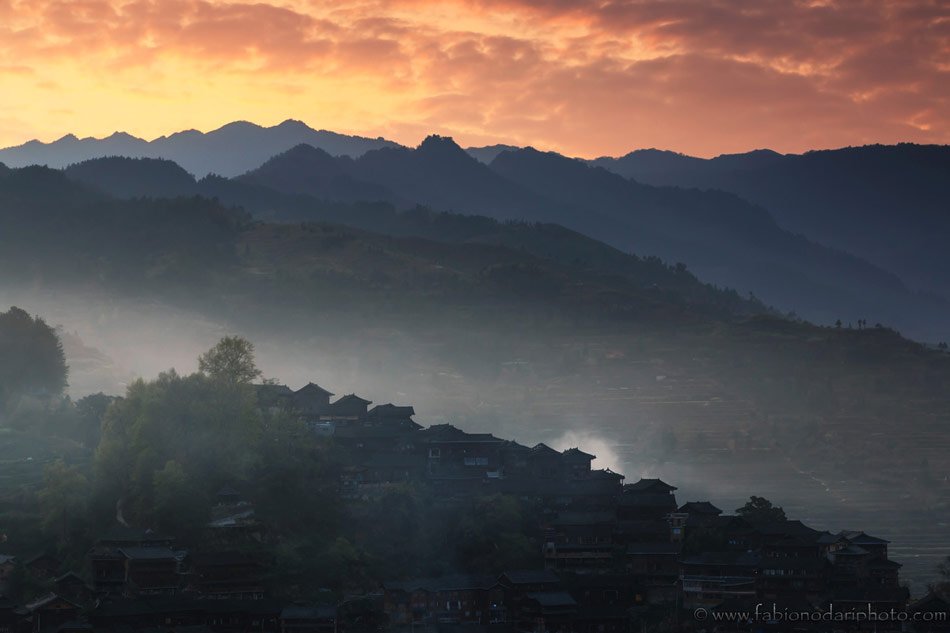
Xijiang is the perfect example of the Chinese tourism concept: take a fascinating place, fill it with shops selling cheap souvenirs produced in some factories in northeast China and start an endless series of construction works that may end in ten years.
Don’t get me wrong: Xijiang is a place worth visiting as long as you know that you will not visit a remote village in the mountains of Guizhou. It would be nice if the authorities started to understand that tourism must be developed responsibly so everyone, especially the local population, can benefit.
An exception to this sad trend is the Hemu Village in Xinjiang, a truly nice and not too overly touristic place. Hopefully, in the future, more and more people in China will realize that travelling is more about getting to know people and less about buying cheap souvenirs that look the same no matter where you go.
- Before you leave for China, remember to get a good VPN. Here I explain why.
- Here, you can find discounted flights to China.
- Here is my travel guide to Fanjingshan, the most famous place in Guizhou Province
Here, you can read my complete travel guide to visiting China. Here is an article about Shaxi, a beautiful village along the ancient South Silk Road. Here are some of the things to do in Zhangjiajie.



Hello!
I am becoming crazy to find where to buy the tickets to enter this place. Could you please give me a hint?
Thanks
Right at the entrance of the town.
Your writings about miao villages is very interested. By the way you belong to which country ?
I’m Italian. Thanks 🙂